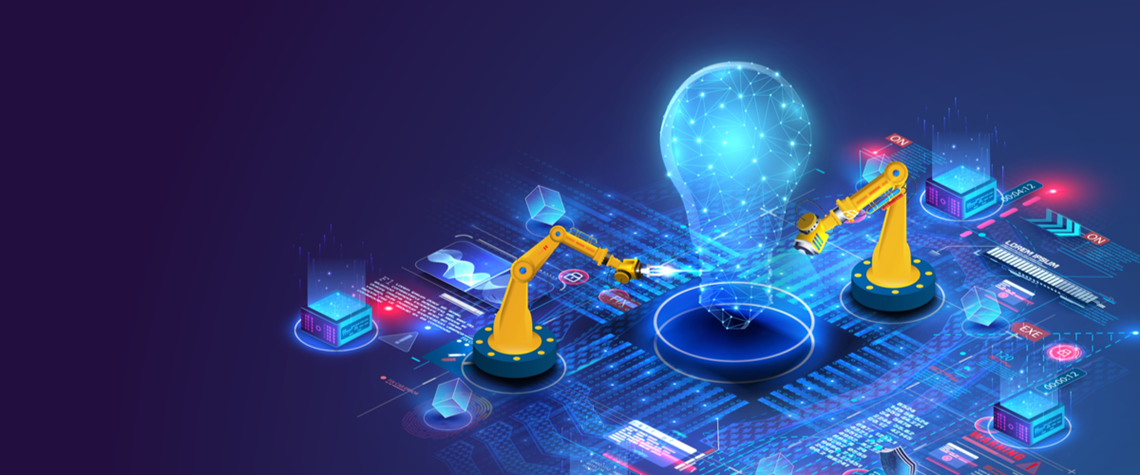The energy industry needs to think bigger when it comes to digital twin transformation, particularly as we move towards a greener, leaner future. Whether it is designing new carbon-capture facilities, electrifying legacy refineries or gaining efficiencies in conventional oil and gas production, organisations around the globe are changing at an unforeseen pace. But without scalable digital twin strategies, they could miss out on their true potential.
The industrial sector is largely motivated to change by becoming more efficient and sustainable. And most organisations understand that insights driven by big data will pave the way. In fact, the World Economic Forum recently suggested digital technology (and digital twins) can help us cut global emissions by 15pc through improved efficiencies and exponential data performance improvements, notably from 5G, AI, and the Internet of Things. Meanwhile, they say as much as $1.6tn in value could be unlocked via digital transformation of the oil and gas industry.
But by failing to create an enterprise-wide network of digital twins, many organisations are oversimplifying the process and falling short. The most common approach we see from industrial clients seeking proof of concept is to only digitise a single asset and then attempt to scale up from there. If only it was that straightforward.
A single-asset digital twin, created for a greenfield asset on a capital project, allows teams to explore best practices for digital twin technology—how it will function without any of the usual complications of asset ageing. And this includes incomplete, missing, siloed and non-digitised data. The focus is on aligning people, processes and data on that one asset.
But the same approach and solution would not fit an ageing brownfield asset. It may have been acquired and follow a different set of standards, and scaling across many assets, stakeholders and geographies comes with further added complexity. It is also critical to have the foresight to not only incorporate net-new greenfield data, but also integrate legacy plant data and—if possible—operational data on existing plants.
Clarifying your end goal and working back from there is the fastest way to digital twin success. Instead of a pilot focused on a single asset, and then fumbling to scale, companies committed to digital transformation should raise their ambitions to focus on digitising a single, common process or phase of similar assets across a region or even the full enterprise.
This is the quickest way of understanding the challenges digitisation can present and allows organisations to create a standard approach for collecting, managing and using design, engineering and operational data.
Imagine having a network of your digital facilities that continuously shares data and insights automatically—ensuring that the right data, at the right time, is in the right hands and allowing companies to take the right decisions more promptly and effectively. This approach has the potential to deliver hundreds of millions of dollars in savings every year.
Taking a holistic view, engineers can also identify opportunities for rationalisation of costs and operational improvements, as well as minimise risk across the fleet. Connected digital twins provide a contextualised digital information backbone across plants and the value chain.
Most organisations are committed to moving to digital, but without the right plan in place, scaling up from a single-asset approach to an enterprise level can be a daunting task. Implementing standardised processes and behaviours across the organisation to drive cultural change is complex on its own. So is simultaneously managing vast amounts of data from multiple projects and assets, and connecting it to all stakeholders, all while designing an approach flexible enough to meet the unique needs of each site, location, job type and objective.
Aligning people and processes can seem complex, but the solution—when driven by digitalisation—does not have to be. There are three principles we recommend for building a future-proofed digital twin strategy:
- Ensure senior leaders are engaged in the process from the start, ideally taking ownership
- Consider executing a software as a service (SaaS) approach, instead of on-premise, to design a solution light enough to deliver quick wins while maintaining the capability to scale quickly
- Set clear data standards and processes prior to starting, and map out your short- and long- term plans to expand if the programme is successful
An approach that considers the three points above can make all the difference in achieving a truly scalable digital twin strategy at an enterprise level where all stakeholders, both internal and external, are aligned around a single hub of data. With this approach, technology can do the heavy lifting to bring the people and processes together, shifting a difficult task into one executed with precision and ease.
The ultimate digital twin vision of many organisations comprises unified engineering tools, real-time operations information, and information from transactional systems to create a rich context-imbued connected data set to support every stage of the value chain—from the initial concept design phase of a capital project through to operations, maintenance and even decommissioning of an asset. But the ability to succeed is dependent on first clearly identifying initial organisational capability and defining a clear roadmap from today’s reality to the future desired state.
Out-of-the-box SaaS technology is transforming digital twin strategies thanks to its ability to bring data together and quickly scale across multiple assets, geographies, and teams. While it may take a considerable time to build tailored on-premise solutions, a SaaS project can be delivered in just a few days and scaled much more rapidly.
And cloud-first organisations are better placed to demonstrate the value of digital twins quickly, with a faster rollout of the technology supported by proven processes. This approach gives a robust baseline digital twin capability from which companies can leverage enhanced data insights and produce powerful performance and operational gains.
To learn more about AVEVA’s approach to engineering the plant of the future, please read our latest whitepaper here.
Vanessa Erickson is portfolio marketing manager, capital projects, at AVEVA









Comments